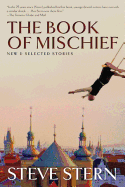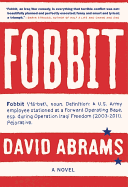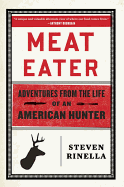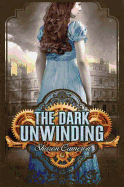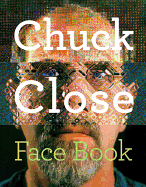Friday, September 7, 2012
At the start of each school year, teachers often ask students to write a brief autobiography to introduce themselves. How much more inspiring would it be for the students--and for the teacher reading these--if kids had some outstanding models (or "mentor texts") via their favorite writers? Here are a few recent and proven favorites.
 Chuck Close may be better known for his portrait paintings, but he's certainly articulate about his artistic process in Chuck Close: Face Book (Abrams, reviewed below). He makes a case for art as a lifeline. William Steig's When Everybody Wore a Hat (HarperCollins) serves as a series of connected captions for his humorous and poignant artwork. It's a lesson in the telling detail. Similarly, in I Can't Keep My Own Secrets: Six-Word Memoirs by Teens Famous & Obscure, edited by Larry Smith and Rachel Fershleiser (also Harper), half a dozen words speak volumes about a person, if they're the right ones.
Chuck Close may be better known for his portrait paintings, but he's certainly articulate about his artistic process in Chuck Close: Face Book (Abrams, reviewed below). He makes a case for art as a lifeline. William Steig's When Everybody Wore a Hat (HarperCollins) serves as a series of connected captions for his humorous and poignant artwork. It's a lesson in the telling detail. Similarly, in I Can't Keep My Own Secrets: Six-Word Memoirs by Teens Famous & Obscure, edited by Larry Smith and Rachel Fershleiser (also Harper), half a dozen words speak volumes about a person, if they're the right ones.
Two elegant scrapbook-like approaches may inspire students to use family stories and photos as a launch point for their own reflections: Lois Lowry's Looking Back: A Book of Memories (Delacorte); and Childtimes: A Three-Generation Memoir by Eloise Greenfield (Harper), which also includes drawings by Jerry Pinkney. Comics fans will want to explore To Dance: A Ballerina's Graphic Novel by Siena Cherson Siegel, illustrated by Mark Siegel (Atheneum/S&S), the chronicle of young Siena's training to be a dancer under George Balanchine.
Answering the perennial question "Where do you get your ideas?," Jon Scieszka provides funny, accessible anecdotes in Knucklehead (Viking). For older readers, Bad Boy by Walter Dean Myers (Harper) and Jack Gantos's A Hole in My Life (Farrar, Straus & Giroux) stand as stellar examples of how both men turned their lives around, from troubled youth to award-winning author. --Jennifer M. Brown, children's editor, Shelf Awareness
The Book of Mischief: New and Selected Stories
by Steve Stern
How to make a Steve Stern story: stir in a large dose of Isaac Singer and early Roth; add a magic pinch of Marquez and Millhauser; shake with enthusiasm; serve in a plastic Marx Brothers cup. Drink deeply while laughing.
The Book of Mischief is the perfect title for this collection of 17 old and new Stern tales full of playfulness, fantasy and a bit of the macabre. Take, for example, the short gem "Lazar Malkin Enters Heaven," which starts with: "My father-in-law, Lazar Malkin, may he rest in peace, refused to die." But he does, eventually, and as he's fighting in a backyard shed with the angel come to take him away, Julius, our narrator, sees "a glimpse of kingdom come."
In the hilarious, masterful "The Wedding Jester," Saul Bozoff is a "bachelor professor of a certain age, squiring his mother to a faded resort half a century past its prime" for a wedding. He is smitten with the beautiful bride, Shelly Supoznik, but then her body is inhabited by the spirit of Eddie Romain, "an alien essence, a dybbuk," the "restless spirit of a dead Borscht Belt comedian." To the guests' amazement and shock, she starts spewing out one-liners, and the tale goes all Sleeping Beauty on us, sort of. Then there's the one about Morton Gruber, czar of a string of lucrative coin-operated laundries, who gets a visit from God. Or there's the one about... stop, stop, this book is filled with classics; there isn't a nebbish (a loser) in the lot. --Tom Lavoie, former publisher
Discover: Short stories that provide hours of laughter and enjoyment from a contemporary Yiddish master of ceremonies.
God Carlos
by Anthony C. Winkler
In a short, parable-like style, Jamaican-born novelist Anthony Winkler reaches back to the 16th-century Spanish conquest of his homeland for God Carlos, a tale of the frequently tragic but also comic clash of races and religions.
The story begins in Cadiz, where Spanish sailor Carlos is hired by Alonso de la Serena, a Mallorcan captain and ship owner, to crew on the Santa Inez on a voyage to the West Indies, where he hopes to find gold and undiscovered lands to carry his name in cartographic immortality.
As the Spaniards set off for the "new world," a simple Jamaican man, Orocobix, carries his recently dead uncle to the tribal burial cave. Orocobix is special among the Arawak because he has met the white gods of Columbus's landing and tells stories of their power and immortality. When the Santa Inez arrives off the coast of Jamaica, it is Orocobix who paddles out alone to meet them and prostrate himself before the first white man he sees, the God Carlos. On an island without extremes of weather or local enemies and with abundant grains, fruits and fish, the peaceful Arawak live unashamedly naked.
Simple as Winkler's parable may sound, his narrative is rich in historical detail and he illustrates the epic forces behind the conquest of the Arawaks. He also guides us carefully through the daily routines of life aboard a 16th-century Spanish vessel. Details like his description of the jardines--seats hung over the rails for the men to relieve themselves--are downright fascinating. --Bruce Jacobs, founding partner, Watermark Books & Cafe, Wichita, Kan.
Discover: Anthony Winkler spins an enlightening parable of the Spanish conquest of Jamaica, rich in historical detail and irony.
Fobbit
by David Abrams
A fobbit, explains David Abrams's novel, is "a U.S. Army employee stationed at a Forward Operating Base, especially during Operation Iraqi Freedom." The environs of FOB Triumph are chaotic, but the Fobbits look forward to the seafood feast on Friday night, play games and watch DVDs, get it on in Porta Pottys and try not to think about the war going on outside. Fobbit is none-too-gentle satire, based on Abrams's own experiences in Iraq.
The heart of the book is Staff Sgt. Chance Gooding Jr., a public relations NCO who writes press releases, which, even as he puts the "right spin" on the bombing and street fighting, will be edited, re-edited and eviscerated until they bear no relationship to the events that made them necessary.
Then there's Captain Abe Shrinkle, a company commander with incredibly bad judgment, a hoarder with a trailer full of food and gifts from the folks back home. Mama's boy Eustace Harkleroad is a self-aggrandizing twit who writes home of his exploits--largely fabricated--and encourages Mama to leak them to the local papers.
In a particularly cynical passage, Abrams describes the media waiting for the body count to reach 2,000. Says Chance in his diary: "2,000 is a number most Americans can hold in their minds and use it to remember the awful waste of this war, this overlong field trip to the desert where we got ourselves tangled in a briar patch and stuck to the tar baby of terrorism." Abrams's tale is powerful stuff. --Valerie Ryan, Cannon Beach Book Company, Ore.
Discover: Abrams, who served on a public affairs team in Iraq in 2005, delivers a behind-the-scenes portrait of war in the spirit of Catch-22 or M*A*S*H.
Laura Lamont's Life in Pictures
by Emma Straub
In this debut novel by Emma Straub (following the story collection Other People We Married), the stage is part of Elsa Emerson's life from an early age: her family owns a playhouse in a small town in 1920s Wisconsin. Every summer, tourists stay in the cabins and watch the shows. Elsa, age nine, sweeps up, hangs around and does whatever she can to stay close to the cast and crew.
When Elsa is old enough to star in a play, she falls for Gordon, marries him at 17 and they head for Los Angeles. She immediately becomes pregnant, so Gordon gets the acting jobs while Elsa stays home with the baby. Pregnant with her second child, she meets studio executive Irving Green at a party. He tells her to "have the baby, lose thirty pounds and come and see me." He changes blonde Wisconsin dairymaid Elsa Emerson into exotic brunette Laura Lamont. She divorces Gordon, becomes a star and marries Irving. Laura wins an Academy Award but is sidelined by another baby. Still, Laura is madly in love with Irving and her children, and all is well--until Irving's rheumatic heart gives out.
Combining opportunism, a great heart, an acceptance of the world as it is and a love of theater in whatever form, Laura is an irresistible heroine, sweet, willing to be sexy if need be, always game. At story's end, she has come full circle, except this time her stage is Broadway. --Valerie Ryan, Cannon Beach Book Company, Ore.
Discover: During Hollywood's Golden Age, a simple girl from Wisconsin becomes a movie star and learns to make it on her own.
Science Fiction & Fantasy
Slow Apocalypse
by John Varley
Dystopian novelists are often less interested in how the world fell apart than in exploring the grim, desolate landscapes left behind. John Varley (a multiple Hugo and Nebula award winner) has thought a lot about the early stages of collapse, though, and his precise details make Slow Apocalypse read like a play-by-play end times scenario.
Dave Marshall, a Hollywood screenwriter on a downward career slide, hears a wild story from a military adviser--what if a scientist created a bacterium that would render petroleum useless and unleashed it in the middle of Saudi Arabia's largest oil field? Even worse, what if that bacterium spread around the world? Dave soon realizes this isn't just a movie pitch, and he starts laying in canned goods and other survivalist gear, which aggravates an already tense situation with his wife. (His precocious 14-year-old daughter, though, is immediately on board.) Things get a little worse, but it might be just a particularly severe gas shortage... until the oil fields at the south end of Los Angeles explode.
From this point, Varley takes Dave and his family step by step through the disintegration of social order, with painstaking attention to the geography of L.A. and Orange County. There's a strong old-school Heinlein vibe to Slow Apocalypse, particularly in its emphasis on self-reliance and mistrust of authority figures. As Dave's world contracts to his wife, daughter and closest friends, and their search for even a slightly less worse off place in the world, Varley never loses sight of the ethical impulses behind the best parts of the human spirit. --Ron Hogan, founder of Beatrice.com
Discover: John Varley's dystopian novel chronicles one family’s mental and emotional adaptation to their disastrous conditions.
In a Fix
by Linda Grimes
Linda Grimes's debut novel, In a Fix, is a fast-paced, riotous romp with a clever foundational concept. Aura adapting--a paranormal ability that lets the adapter assume the appearance of another person--can be a dangerous business, but Ciel Halligan is smart and capable enough to take over her clients' identities, solve their problems and collect her fee. If only she could convince the overprotective men in her life that she can take care of herself. Ciel's big brother, Thomas, their honorary "cousin" Billy, and Mark, Thomas's best friend and Ciel's long-time object of lust, all conspire to trail, guard and generally annoy her.
Ciel's latest assignment, convincing her client's boyfriend to propose, goes awry when a hulking group of modern Vikings blow up her resort bungalow and abduct the boyfriend. True to form, Billy and Mark both try to interfere with Ciel's efforts to retrieve her target. Aura adapters themselves, both men use their powers to save Ciel from herself and, in rakish Billy's case, to spy on her in the bath. Before Ciel can decide whether to risk her heart on Billy's roguish charms or take a shot at convincing Mark she's a grown woman, she finds herself right in the middle of the Vikings' plot. Can she save the day with only her wit, powers and sense of humor?
Snarky, strong-willed Ciel and her sexy male counterparts are sure to win a fan following with this first novel in a series. --Jaclyn Fulwood, blogger, Infinite Reads
Discover: A funny and fast-paced new paranormal series about a human chameleon and the men who love her.
The Rapture of the Nerds
by Cory Doctorow and Charles Stross
In the future of The Rapture of the Nerds, it has been decades since the Singularity--a point in technological evolution where god-like artificial intelligence begets increasingly more advanced versions of itself--and most of humanity has transcended from their fleshy bodies into a "computronium cloud" crowding the inner solar system. Huw Jones lives among the other billion humans who remain earthbound in what amounts to a combination nature preserve and hedonistic paradise. Huw, however, is a technophobic misanthrope who shuns the surreality of transhuman daily life by working as a potter in the Welsh countryside. His relatively quiet life is upended by a summons to Tech Jury Duty, where citizens judge the worthiness and potential destructiveness of technology beamed down from the Cloud (also known as "god vomit").
Cory Doctorow (Makers) and Charles Stross (Rule 34) deliver science fiction humor at its best--hilariously absurd and more than a little thought provoking. Their collaboration is reminiscent of Douglas Adams's The Hitchhiker's Guide to the Galaxy, though far more vulgar. Nanobots redesign houses on a whim; bailiff-golems enforce order in a crazed reality TV star's courtroom; a holographic djinni in a teapot gives directions around Tripoli--and these are merely the tamest of Huw's wild encounters, which include an especially satisfying sequence among the petroleum purists and neo-Luddites of the hellish American "neverglades."
Doctorow and Stross do plenty of pandering to techies and trekkies, though readers without nerd credentials will still find amusement in this book's dry British humor, silly situations and high-tech speculation. --Tobias Mutter, freelance reviewer
Discover: Two of contemporary science fiction's leading stars team up to tell the hilarious misadventures of a technophobe in a post-Singularity future.
Biography & Memoir
Meat Eater: Adventures from the Life of an American Hunter
by Steven Rinella
Steven Rinella (American Buffalo) grew up hunting, trapping and fishing with his two older brothers. Hunting has played many roles in his life, from a source of income and food to a form of recreation and lifestyle. In a world that increasingly gets its meat from a supermarket, Rinella offers a passionate and reasoned ode to what he calls humankind's oldest endeavor.
In a series of vignettes, Rinella recounts experiences from childhood through parenthood. He relates the first buck he didn't get and the experience of trailing mountain lions in Arizona and Dall sheep in Alaska. He describes his first entrepreneurial scheme to trap small mammals and sell their fur, as well as a regretted dalliance with illegal hunting methods. He discusses hunters' ethics, the rules upon which they do not universally agree, and the idea of "fair chase." Occasionally, he offers tasting notes on various animals' flesh, which may be useful to his fellow hunters along with his instructions on preparation--they may also help non-hunters understand the appeal of eating, say, squirrel (not to mention "camp meat").
"Hunting stories are the oldest and most widespread form of story on earth," Rinella observes; thus historical anecdotes about Daniel Boone and early hunter-gatherers accompany him in his evolution from hunting for fun and profit to hunting as a way to feed his own family efficiently and mindfully. Meat Eater is a book for the nature lover or the hunter as well as the uninitiated. --Julia Jenkins, librarian and blogger at pagesofjulia
Discover: A loving exploration of hunting--and meat--in human history, and its role in our lives today, from the host of the Travel Channel's The Wild Within.
Sports
Yankee Miracles: Life with the Boss and the Bronx Bombers
by Sally Cook and Ray Negron
Baseball might be considered America's favorite pastime, but to a 17-year-old graffiti artist from Queens, it also became a saving grace. While spray-painting his "art" on Yankee Stadium in the Bronx on June 29th, 1973, Ray Negron was caught in the act by George Steinbrenner, the Yankees' infamous owner. But instead of prosecuting the vandal, "The Boss" showed uncharacteristic compassion and offered the young Negron a way to work off his transgression by helping out the team. This begins a moving story of how a fatherless street kid, given a chance by an unlikely savior, transformed himself from batboy to gofer to batting practice pitcher, ultimately becoming a much beloved and trusted inner-circle member of the Bronx Bombers.
With an assist from Sally Cook (Another Season), Negron--a loyal Yankee employee for nearly four decades--pays tribute to the powerful and oft-maligned Steinbrenner for his role in changing his life, while also presenting a plethora of surreal moments and memories shaped by baseball greats like Billy Martin, Reggie Jackson, Thurman Munson, Bobby Murcer, Phil Rizzuto, Catfish Hunter, A-Rod and Derek Jeter. Told with candor and admiration, Yankee Miracles is an inspirational mosaic detailing Negron's unusual relationship with each of his heroes and the wisdom and lessons they imparted--and of how Negron, now a community adviser for the team, has dedicated himself to helping sick and needy city kids find joy, fulfillment and hope in their own lives. --Kathleen Gerard, blogger at Reading Between the Lines
Discover: An unlikely inspiring story of how a teenaged vandal was saved by the New York Yankees.
Audio
The Beautiful Mystery
by Louise Penny, narrated by Ralph Cosham
Louise Penny ventures out of Three Pines in The Beautiful Mystery, her eighth novel featuring Chief Inspector Armand Gamache, but the change of setting doesn't faze Ralph Cosham, the narrator of many of the audiobooks in the series. Cosham's approach enhances the reverent tone while still plucking Penny's ripe humor from the vines that weave their ways throughout the dark plot. Penny has a gift with dialogue, and Cosham makes that gift pop for the audience.
Gamache and Inspector Jean-Guy Beauvoir go where no layman has before: the monastery of Saint-Gilbert-Entre-les-Loups. The monks are famous for singing Gregorian chants, and while Penny does not write much for Cosham to sing, what he does harmonize is rich and soothing, an earworm listeners won't mind having stuck in their heads.
The French words and phrases peppered throughout the narrative roll flawlessly off Cosham's tongue, and he translates the starkly differing emotional effects of seclusion on each of Penny's main characters: Gamache is cloaked in wonderment; he finds freedom and release through introspection, connecting with his soul. Beauvoir, on the other hand, suffocates, slowly choking away his sanity.
The "Beautiful Mystery" from which this novel derives its name is the allure of the Gregorian chants. But there is no mystery about the allure of Louise Penny's series or the beauty with which Ralph Cosham continues to narrate it. This is a series that should be experienced at least once on audio, and The Beautiful Mystery is the perfect choice. --Jen Forbus of Jen's Book Thoughts
Discover: A murder mystery, a musical mystery and a political mystery unravel through incontrovertibly stunning narration.
Children's & Young Adult
Every Day
by David Levithan
David Levithan (Will Grayson, Will Grayson) invents an original and thought-provoking premise: a 16-year-old named A, neither male nor female, of undetermined race and ethnicity, wakes up every day in a new body. Each midnight, A's essence enters someone else.
A's motto is essentially, "Don't disrupt the life you're living in." The narrator attempts to access the person's memories to try to behave as the host body would in any given situation. A has woken up as Hugo on Gay Pride Day, and as Ashton Ashley, with a face and figure that resemble Beyoncé's. A demonstrates that even a seemingly ordinary person is not ordinary. So many details make a life meaningful: "Knowledge is the only thing I take with me when I go." But on day 5994, when readers first meet A, the narrator wakes up in the body of Justin and falls in love with Rhiannon, Justin's girlfriend. "I want to be the one who lives up to her hopes, if only for the time I'm given," A decides. But over the next 40 days, we watch A's increasing desire to share with Rhiannon what this life of 24-hour experiences has been like, and to convince her to go on this journey with them.
Levithan's unusual love story will make teens think about how the core of the soul never changes. A speaks of faith, love, dreams and death with a wisdom derived from thousands of lives visited over 16 years and firsthand proof of how much humans share rather than what sets them apart. --Jennifer M. Brown, children's editor, Shelf Awareness
Discover: A 16-year-old soul moves to a new human host every 24 hours and risks the possibility of a lasting love.
The Dark Unwinding
by Sharon Cameron
In Sharon Cameron's debut novel, international intrigue in 1850s England is the backdrop for 17-year-old Katharine Tulman's discovery of a host of family secrets. Gifted with numbers, Katharine slaves away for her odious aunt and cousin, keeping their books and managing their servants. When her aunt sends her off to have her (very rich) Uncle Tulman declared insane, there's a silver lining for her: if she can keep her position as overseer of cousin Robert's books, she'll be able to maintain some control over her life.
The situation becomes complicated almost as soon as she arrives at Stranwyne Keep. Katharine's uncle, clearly unbalanced and sometimes childlike in his behavior, is also brilliant. His elaborate projects and contraptions require a whole village to make and maintain them--a village full of refugees from workhouses. As Katharine falls in love with the place, she also fears for her own sanity. Troubled dreams and sleepwalking incidences lead her to believe she might share more with her uncle than she'd care to admit. Moreover, there's foul play at work, and the source may go as far up as the French court.
Cameron's endearing heroine is cut from strong cloth. She must make hard choices and face uncomfortable truths as she's swept up in a sweet love story and the adventure of a lifetime. The author captures the tenor of 1850s England without belaboring her setting, providing a vivid background against which her characters can shine. --Jenn Northington, events manager at WORD bookstore
Discover: A smart, conflicted heroine who must uncover and face hard truths about her family and her country.
Chuck Close: Face Book
by Chuck Close and Fran Mouly
Chuck Close's honest, personal memoir about his life and work makes an ideal book for kids who find school challenging, who are creative or who see the world a bit differently from their peers. In other words, this one's for most everyone.
Close describes his road to becoming an artist as one of necessity. As a dyslexic student who also struggled with math and with memorizing names and dates, he found a way to master the material. For instance, he made a 10-foot-long illustrated map of Lewis and Clark's expedition for history class. "Art was what I did to convince others that I was interested in school," Close writes. "It was what I did to feel good about myself." His best-known paintings also resulted from Close's desire to surmount a challenge. He suffers from prosopagnosia, or face blindness: "But if I can flatten someone's face, I have a much better sense of what he or she looks like." He takes a photograph of his subject, and his portraits distill those photographs into grids comprised of tiny squares.
Step by step, Close describes his process of painting a face square by square. The question-and-answer format of the book also reflects Close's learning style. The book's brilliant centerpiece consists of a series of overlays: his self-portraits, divided into thirds, line up precisely, forehead to forehead, chin to chin. It illustrates the importance of those small squares, the difference between a horizontal/vertical grid versus a diagonal grid, the effect of watercolors or woodcuts on a mood. A winner. --Jennifer M. Brown, children's editor, Shelf Awareness
Discover: An artist who used his creativity to grapple with life's challenges, from childhood through adulthood.


